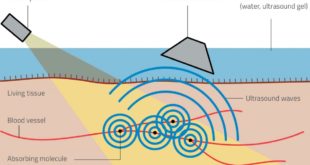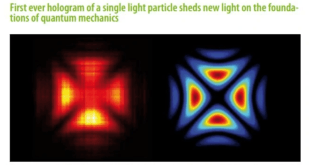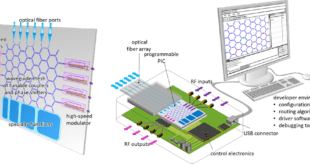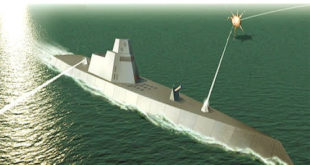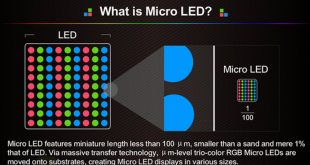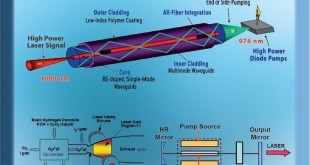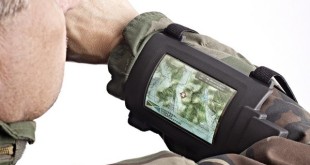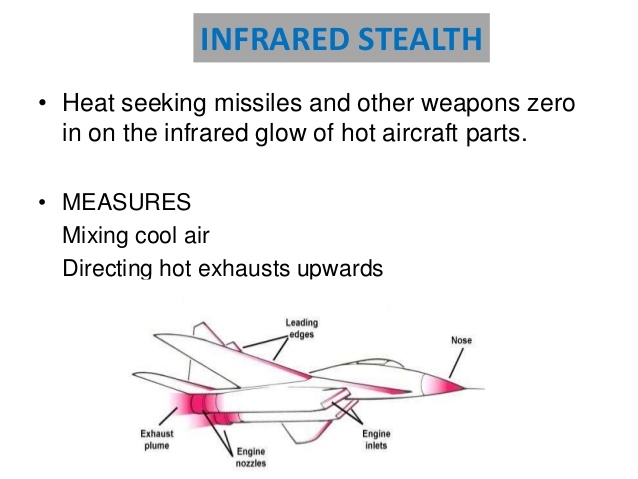As copper reaches its speed limit, engineers look at optics to replace copper for very high speed signals. The electronic transmission of information requires energy – the faster the interface, the more electrical power is required. At very high data transfer rates, optical interfaces can be significantly more efficient than …
Read More »Photoacoustic Imaging enable Seeing Through Solids, hackproof Biometrics and Image Underwater Objects
Alexander Graham Bell discovered photoacoustics by accident when he was working on the development of the photophone, a followup to his recently developed telephone that operated via modulated sunlight instead of electricity. You would operate a photophone by speaking into its transmitter toward a mirror placed inside of it. The vibrations …
Read More »Quantum holography
We see things because our eyes are sophisticated light detectors: they constantly capture the light rays bouncing off nearby objects so our brain can construct an ever-changing impression of the world around us. Photography, as this became known, has revolutionized the way people see and engage with the world but …
Read More »Programmable or reconfigurable optical chips will enable Optical FPGAs that can be reconfigured using software to perform different functions
Photonics, the science of generating, detecting and manipulating particles of light, forms the basis of many of the technologies we use in our everyday life. In the evolving branch of integrated photonics, increasingly large and complex optical circuits can be built on the surface of a chip. The majority of …
Read More »US Navy developing next generation laser weapons for defending warships from ballistic and cruise missiles to Hypersonic Missiles
Navy ships face an increasing number of threats in conducting their missions, including UAVs, armed small boats, and adversary intelligence, surveillance and reconnaissance systems. The US Navy is concerned about the survivability of Navy surface ships in potential combat situations against adversaries, such as China, that are armed with large numbers …
Read More »Breakthrough OLED and MicroLED Display technologies advancing to meet the need from commercial to military applications
Flat-panel display technology is exploding on several fronts as more screens are required for more devices. In total, the worldwide display market is expected to grow from $150 billion in 2019 to $228 billion by 2028, according to Touch Display Research. Today, the display market is dominated by two technologies—liquid …
Read More »Militaries developing scalable hundreds of Kilowatts to Megawatts High Power Laser technologies for air and missile defense
The Laser Directed Energy Weapons (DEWs) offer a transformational ‘game changer’ to counter asymmetric and disruptive threats, while facing increasingly sophisticated traditional challenges. Laser technology provides major advantages for military applications over kinetic weapons due to High precision and rapid on-target effect, precise and scalable effects, avoidance of collateral damage …
Read More »Flexible displays enable lighter-weight, lower-power, more-rugged smartphones , soldiers wearable and vehicle applications
With the flat panel display having already been widely used more than 40 years, there have been many desired changes in the display technology, focusing on developing a lighter, thinner product that was easier to carry and store. A flexible display or rollable display is an electronic visual display which …
Read More »Infrared Search and Track (IRST) emerging as preferred solution for engaging stealthy aircraft and cruise missiles
Stealth has revolutionized the Air power by vastly enhancing the penetration capabilities of fifth generation aircrafts like the F-22A Raptor developed by Lockheed Martin and Boeing, L.M. F-35 Lightning II. Stealth in military is often described to mean, all the methods, techniques and measures intended to deny or delay the …
Read More »DARPA’s LUMOS to develop Photonic integrated circuits (PICs) and photonics platforms for defence applications
Photonics is a breakthrough technology as it uses photons (smallest unit of light) as the data carrier instead of electrons (smallest unit of electricity) used in electronic ICs. As light travels at very high speeds, photonics is widely used to transfer huge amounts of data at a very high speed. …
Read More » International Defense Security & Technology Your trusted Source for News, Research and Analysis
International Defense Security & Technology Your trusted Source for News, Research and Analysis

